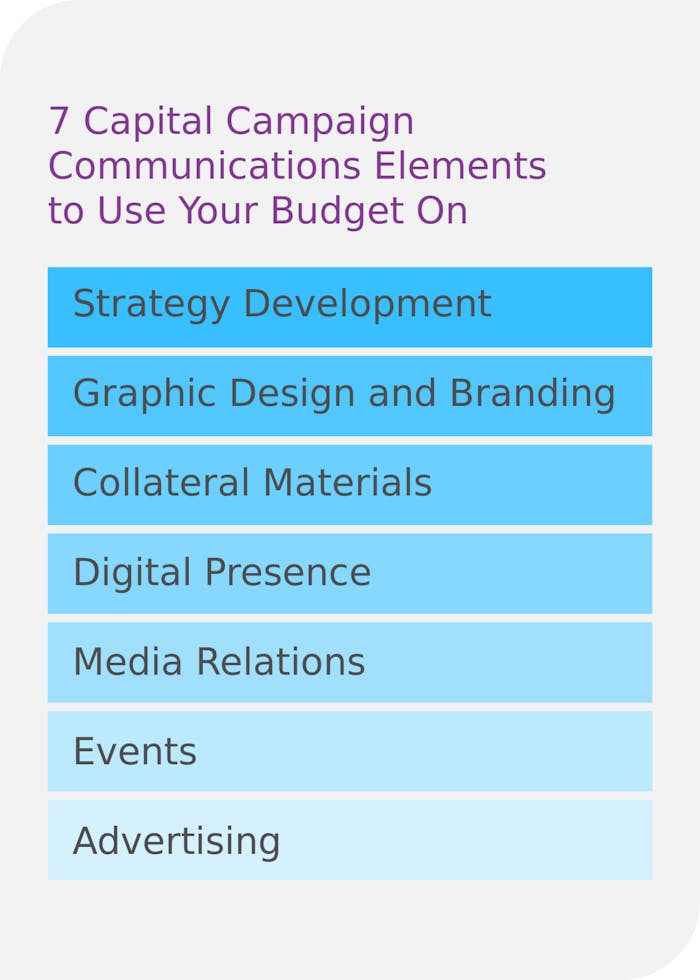
Maximizing Your Capital Campaign Communications Budget
Friday, February 2, 2024
To get the most out of your capital campaign communications budget requires you to know what gives you the biggest “bang for the buck,” to use an old expression. And you may be surprised to learn that it’s not a fancy campaign brochure!
In fact, if you think that the heart of your campaign is an elegant, glossy, full-color brochure and a high production value video, that’d be a hard idea to swallow. Because both the brochure and the video are expensive.
But in reality, many capital campaigns are successful without a fancy brochure or high-end video.
It’s a myth that successful campaigns rely on high-end materials. The research shows that nonprofits with small budgets can meet their capital campaign fundraising goals, especially when they focus on building relationships with their top donors. And those folks don’t need fancy materials. In fact, many of them are pleased to be included in the planning phases of the project and the campaign and are happy to review drafts of your planning materials, like your case for support.
So, what do you need to spend communications money on?
7 Important Capital Campaign Elements to Focus Your Communications Budget On
Though the communications budget for your campaign will vary depending on the size and scope of your campaign, you will want to include line items for the following elements.

- Strategy Development: If you don’t have a communications expert on your team, you will want to bring in an expert to help develop key messages and determine the best strategy for using various communications channels.
- Graphic Design and Branding: Throughout your campaign, you will want high-quality design services to develop a consistent identity for your campaign that will be used in all of your campaign materials.
- Collateral Materials: Even though you don’t have to invest heavily in brochures and videos, you will need some collateral material and it should be well designed.
- Digital Presence: You will want to update your website during the campaign to include the campaign and you may need help with email marketing campaigns and social media campaigns.
- Media Relations: You should develop a plan for press releases and media events.
- Events: Your campaign will have both a kick-off event and a final celebration. You may wish to budget for professional assistance in planning and executing those events.
- Advertising: During the public phase of your campaign, you may wish to use paid advertising to spread the word about your organization and your campaign more broadly.
Before you spend any money on communications, apply a financial management best practice and evaluate your available resources. Do any of your staff members have communications expertise? Is there someone on the staff who might take the lead in developing a communications plan? Do you have board members or other active volunteers with communications expertise?
That said, communications are an important aspect of a capital campaign, and you shouldn’t compromise on quality. If you plan well and use resources effectively, you should be able to get high-quality expertise without spending an inordinate amount.
Remember, while you will need a well-conceived communications plan, you won’t need a costly brochure or video!

Jitasa’s bookkeeping and accounting services are affordable and cater to every nonprofit.
Learn More